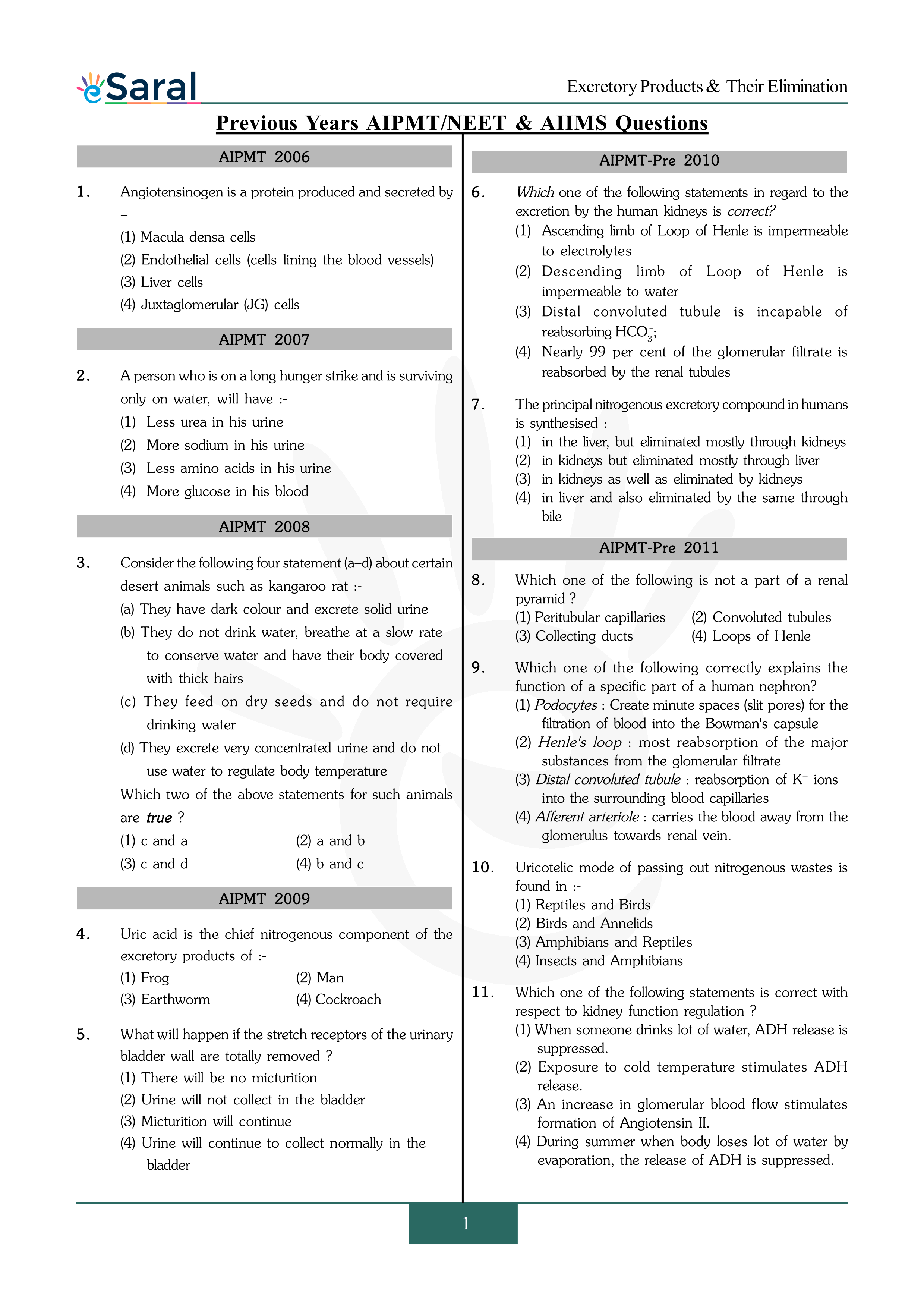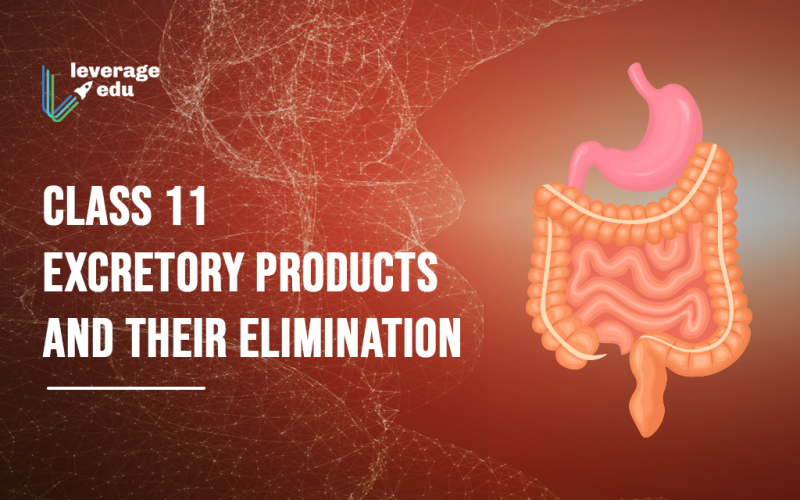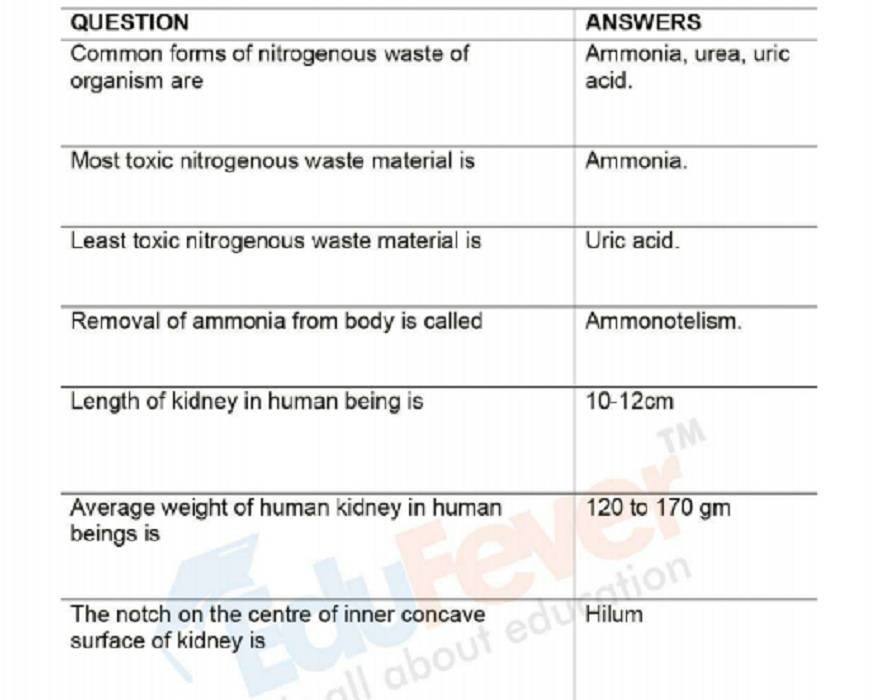.jpg)
Excretory Products And Their Elimination NCERT Book of Class 11 Biology
Excretory products and their elimination | Khan Academy How does the human body work? - Class 11 7 units · 33 skills Unit 1 Digestion and absorption Unit 2 Breathing and exchange of gases Unit 3 Body fluids and circulation Unit 4 Excretory products and their elimination Unit 5 Locomotion and movement Unit 6 Neural control and coordination

Excretory Products & their elimination NEET Previous Year Questions with Complete Solutions
Excretory Products and their Elimination PPT PDF 👉 Part 1: Types of Excretion, Human excretory system. 👉 Part 2: Urine Formation. 👉 Part 3: Countercurrent System, Micturition. 👉 Part 4: Regulation of kidney function, Disorders. Tags: Nephrology Physiology and anatomy. Facebook;

Class 11 Excretory Products and their Elimination Notes Leverage Edu
Excretory products and their elimination | Khan Academy Class 11 Biology (India) 20 units · 94 skills Unit 1 The living world Unit 2 Biological classification Unit 3 Plant kingdom Unit 4 Animal kingdom Unit 5 Morphology of flowering plants Unit 6 Structural organization in animals Unit 7 Cell : The unit of life Unit 8 Biomolecules

Excretory products and Their Elimination
animals. Ammonia produced by metabolism is converted into urea in the liver of these animals and released into the blood which is filtered and excreted out by the kidneys. Some amount of urea may be retained in the kidney matrix of some of these animals to maintain a desired osmolarity.

11_biology_notes_ch19_excretory_products_and_their_elimination.pdf Kidney Genitourinary System
According to excretory products and their elimination class 11, the important features of the Henle's loop are mentioned below. Minimum reabsorption in its ascending limb. Maintains high osmolarity of medullary interstitial fluid. Descending loop - permeable to water but impermeable to electrolytes.

Complete Excretory Products & Their Elimination Online Course for AIPMT/AIIMS/Class 12 Board
INTRODUCTION Removal of waste products from the body is called excretion. Waste products are synthesized in the cells due to metabolic activity. Excretion is an essential process in all forms of life. In one celled organisms, waste are discharged through the surface of the cell.

Excretory Products And Their Elimination Lecture1 YouTube
The Excretion, Excretory Products and their Elimination Class 11 notes is one of the important study tools while preparing for Class 11 Biology board exam and NEET exam. It is considered to be an important study tool as it explains all the topics and concepts in a broad way.

Excretory Products And Their Elimination Lecture2 YouTube
Elimination of metabolic waste products from the animal body to regulate the composition of body fluids and tissues is called excretion. These waste products include ammonia, uric acid, urea, carbon dioxide and ions like , , Cl - and phosphates and sulphate. Ammonia is the most toxic and uric acid is the least toxic.

Excretory Products and their Elimination L09 Disorders of Excretory System Ft.Nikhil YouTube
Learn for free about math, art, computer programming, economics, physics, chemistry, biology, medicine, finance, history, and more. Khan Academy is a nonprofit with the mission of providing a free, world-class education for anyone, anywhere.

Excretory Products and their elimination class 11 NEET Biology Quick Revision NCERT
Excretion is the physiological process of elimination of metabolic waste from the body. The excretory products include amino acids, urea, uric acid, carbon dioxide, water, and ammonia. Some Molluscs and Echinoderms excrete waste products from the body in the form of amino acids.

Mind Map Excretory Products & their Elimination Notes EduRev
Solution: Kidneys regulate the glomerular filtration rate through a mechanism which is auto-regulatory. It involves the action of the juxtaglomerular apparatus, which is a microscopic structure present between the returning distal convoluted tubule and vascular pole of the renal corpuscle of the same nephron.
Excretory Products and their Elimination Biology Notes for NEET/AIIMS/JIPMER
The main excretory organ in human and other mammals is a pair of kidneys which are bean-shaped and reddish-brown in color. It is an excretory and homeostatic organ which is mesodermal in origin. It is located between the last thoracic and lumbar vertebra. Its weight is 140 grams. There are two parts of the kidney.

Excretory Products and their Elimination Revision Notes for NEET
Important Questions for Class 11 Biology Chapter 19 Excretory Products and Their Elimination. Metabolic activities or excess ingestion causes animals to accumulate uric acid, urea, water, carbon dioxide and ions such as K+, Na+, sulphate, etc which needs to be eliminated from the body either partially or completely. Through this unit, we learn.
.jpg)
Excretory Products And Their Elimination NCERT Book of Class 11 Biology
NCERT Solutions Class 11 Computer Science. 3.Indicate whether the following statements are true or false. (a) Micturition is carried out by a reflex. (b) ADH helps in water elimination, making the urine hypotonic. (c) Protein-free fluid is filtered from blood plasma into the Bowman's capsule.

The human excretory system and its excretory products simplified Science A Plus
Introduction Excretion refers to elimination of waste products from the body. It is a physiological process that occurs in every living being. The eliminated bodily wastes include amino acids, ammonia, urea, uric acid, water, and carbon dioxide. Though animal excretion is different from human beings, the process occurs in both.

excretory products and their elimination class 11 biology Human Excretory systems (part 6
Excretory Products and their Elimination Zoology Practice questions, MCQs, Past Year Questions (PYQs), NCERT Questions, Question Bank, Class 11 and Class 12 Questions, NCERT Exemplar Questions and PDF Questions with answers, solutions, explanations, NCERT reference and difficulty level